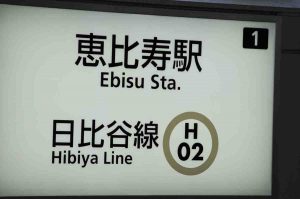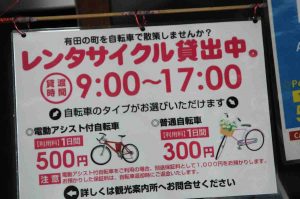Survival Japanese in Tokyo
I have taught a lot of students who are going to Japan to live.
As a result I have been able to develop a syllabus that helps these people in terms of developing the language/communication skills necessary for daily life.
The length of time needed to master the basics varies from student to student but generally the greater the effort the quicker the reward.
The main areas are:
-
Pronunciation
Some students have problems with “i” and “e” and “r” and “t” (just asJapanese people have problems with “l” and “v” as in “I rub you”), so it is likely their utterances that included these sounds could be misunderstood by Japanese people, or annoy/amuse them.These quite often stem from the fact that they have tried to learn Japanese from Romanized scripts. This is one of the main reasons why I always suggest prospective students learn to read Hiragana first.
In addition, all the proper textbooks for post-basic Japanese are written in Japanese scripts. -
Listening skills
Quite often students are required to understand simple instructions/announcements such as ones in railway stations.
-
Grammar
Lessons will focus mainly on verbs and adjectives so students can conjugate these according to their needs.
-
Differences in culture
You are going to a country where people have double-layer thoughts E “Tatemae” and “honne” which can be roughly translated as Estated public reasonEand Personal feeling/intentionE Japanese people employ TatemaeEto be polite to others as disagreement, even wth close friends, is seen as impolite.
 However, HonneEor a person’s real intention does not necessarily reflect his public character. This often confuses gaijin (foreigners) as their Japanese friends seem to have agreed with what you said, but their actual behaviour may be different.
However, HonneEor a person’s real intention does not necessarily reflect his public character. This often confuses gaijin (foreigners) as their Japanese friends seem to have agreed with what you said, but their actual behaviour may be different.
Below is a basic lesson plan for those who would like to prepare for living in Japan:
-
Japanese alphabet
The first lessons focus on the 107 sounds in the Japanese alphabet (English has over 2000 sounds!). The aim is to be able to say each accurately so words and phrases are pronounced correctly and Japanese people will understand what you are saying. The most basic script, hiragana, is phonetic, which means each letter has a unique sound, so once you learn these, you can actually pronounce Japanese quite accurately.
-
Hiragana
The next task is to learn to read and write hiragana, which usually takes 5 to 6 weeks. To be able to recognize these letters, it is better to write them out.
 Students will be given a lot of practice reading these on my laptop computer-generated exercises.
Students will be given a lot of practice reading these on my laptop computer-generated exercises. -
Katakana
Then, I start to teach the Katakana script. The sound of each katakana letter is exactly the same as for Hiragana. Katakana is used to write out ‘loan words’ (non-Japanese words) such as ‘coffee, ice-cream, England or Jim, Maria, etc’ It is important to be able to read these as, for example, a lot of items on menus are written in Katakana. Tom, one of my students, mentioned this on. Learning these takes another 4 to 5 weeks.
-
Vocabulary
After learning these scripts, students focus on increasing vocabulary by reading hiragana and katakana words. I’ve made a lot of visual aids on my computer that enable you to practise learning these words. These include: greetings, numbers, weather-related words, names of food/drinks as well as 56 very important verbs and adjectives.
Once you’ve learnt to read and write Hiragana and Katakana, you will feel confident as you can read a lot of items on menus, some signs, and write your name. Moreover, you are ready to study Japanese using a proper Japanese textbook! -
Listening skills
A part of each lesson will focus on improving your listening skills as you obviously need to listen to Japanese in a lot of different settings. I have gathered mp3 files and video clips that will enhance your awareness of some standard phrases (although some expressions consist of several words, when you hear them at a natural speed these sound like just one long-joined up sound). For example, my computer has a lot of mp3 files that enable you to listen to almost all the announcements on the Yamanote Line in Tokyo (the equivalent to London’s Circle Line). You can also listen to Japanese spoken at natural speed by ordinary Japanese people. To achieve this goal, I have numerous video clips, each of which lasts roughly eight minutes.
-
More complex structures/phrases
Once you are confident with these, lessons will move to constructing more complex and more useful constructions. These include
- Ima nan-ji desu ka (What time is it now?)
- X wa ikura desu ka (How much is X?)
- Yubin kyoku wa doko desu ka (Where is a post office?)
- Watashi wa Maria Jones desu. Igirisu-jin desu (I am Maria Jones, and am British)
- Shimbashi e iki-tain desu ga (I would like to go to Shimbashi,)

-
More advanced
From this stage on your learning curve shoots up quickly as you can read most of the content in the main textbook and have a solid knowledge of the grammatical foundation of verbs and adjectives.
-
Basic Kanji
I will introduce some kanji as you make progress, so that you can recognize what they mean.
 You may not have to read these kanji, but it is very helpful to understand what they mean.
You may not have to read these kanji, but it is very helpful to understand what they mean.
For example, “÷ means ‘meat’ and “‹›” means fish. You will see these kanji very often on menus. The kanji “Œû” is useful as this is used to mean “oŒû” and ““ü‚èŒû”, which means “exit” and “entrance”. -
Cultural differences
Differences in culture
You are going to a country where people have double-layer thoughts E “Tatemae” and “honne” which can be roughl translated as Estated public reasonEand personal feeling/intentionE Japanese people employ tatemaeEto be polite to others as disagreement, even wth close friends, is seen as impolite.
However, honneEor a person’s real intention does not necessarily reflect his public character. This often confuses gaijin (foreigners) as their Japanese friends seem to have agreed with what you said, but their actual behaviour may be different. -
About Tokyo
The practical aspects of being in Tokyo (or another city) are also dealt with.
 For example, there are no A-Z street maps for towns and cities in Japan so the best ways to find a specific location are either to go to a ‘koban’ (a police box) or to look at the area maps, both of which are usually found near railway stations but also all over residential areas.
For example, there are no A-Z street maps for towns and cities in Japan so the best ways to find a specific location are either to go to a ‘koban’ (a police box) or to look at the area maps, both of which are usually found near railway stations but also all over residential areas.

